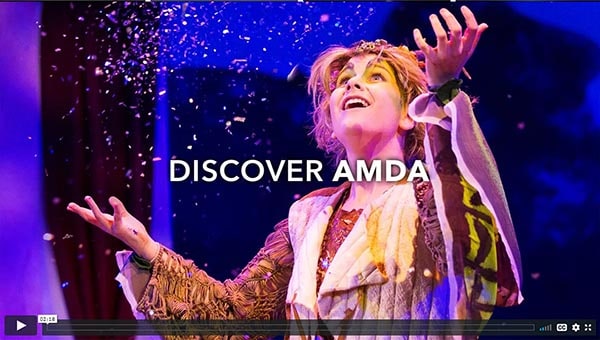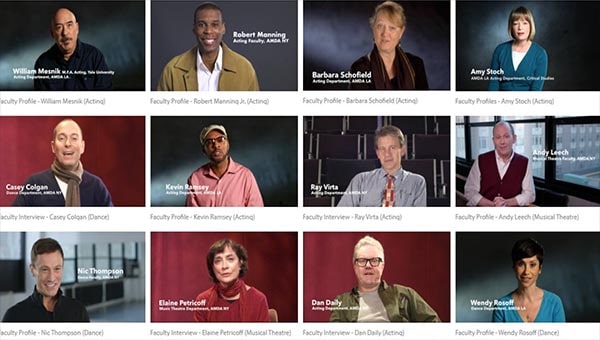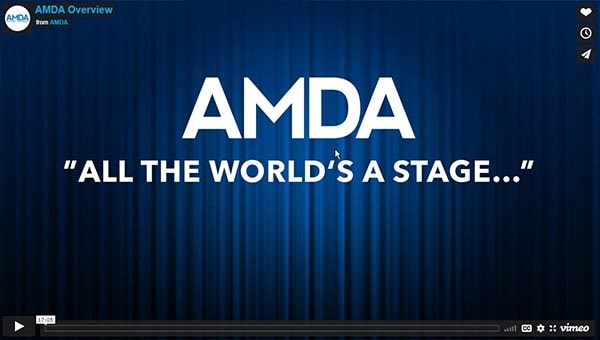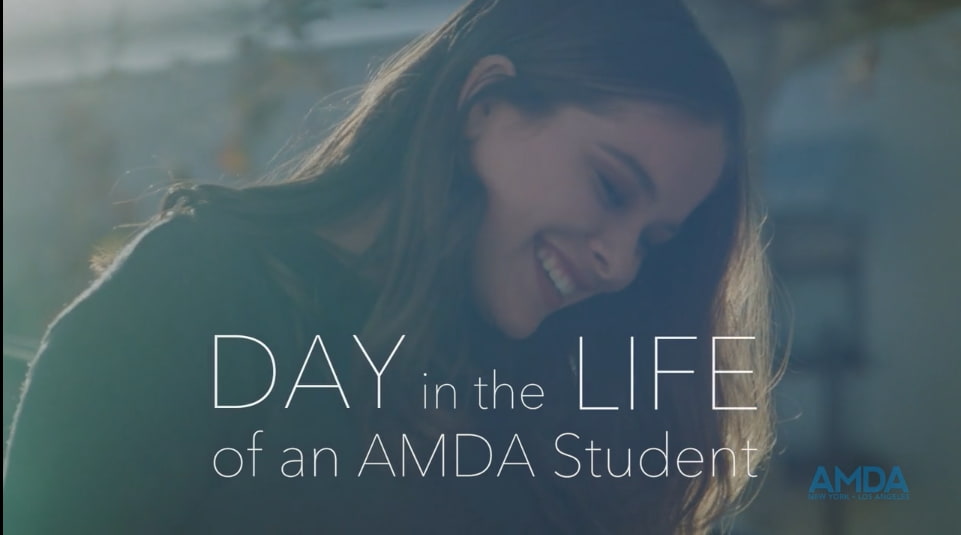AMDA’s Philosophy and Standards Regarding Casting Practices
July 20, 2020 - Announcements
At AMDA, we are committed to creating and upholding what we believe are the best standards and practices regarding casting for our students in our classrooms, on our stages, and for our on-camera work. And we hope one day soon to see these standards and practices realized across platforms for performing artists including Broadway, national and international stages, film and television.
Our focus is to ensure equality and inclusion with regard to casting. We are so proud of the diversity in our AMDA community and we strive to provide the opportunities that our students deserve.
CHANGING TRADITIONAL CASTING PRACTICES
Traditionally, Broadway and film and television have cast roles within a context of historical references, character descriptions from the author, or culturally embedded biases regarding type. This practice has equated consciously or unconsciously to exclude a wide range of performers from major roles (i.e.: based on race, gender identity, unconventional physical characteristics, etc.). We, at AMDA, are evolving – we are discarding these beliefs and practices for a more enlightened perspective. We know that we can and will find a way to:
1) Tell the story
2) Do right by the authors
3) Do right by all of our communities
4) Honor the values that provide opportunity for exploration, growth, and development of each individual artist
We are now making a change at AMDA – ALL roles will be available to any actor whose performance can maintain the integrity of the story and who can believably inhabit the character.
We are asking all AMDA Community Members to embrace this new, specific, focused policy regarding casting – both in the classroom and in our performances – leaving outdated concepts of “traditional casting” behind. Note that AMDA’s exception to these policies/philosophies is with material that has been written specifically for BIPOC artists (Black, Indigenous, People of Color).
TYPECASTING
The practice of typecasting has been prevalent in the performing arts industry for decades. In order to dismantle the practice of typecasting, we must first understand the history of how this practice evolved. Type has most commonly been associated with casting processes and how performers may be viewed (by casting directors, directors, producers, writers, etc.) as being “right” for certain roles. It is within this context that such phrases as “typecasting,” “casting to type,” “casting against type,” or “stereotype” are often used. The concept relied upon a belief that an audience should be able to understand a character at first sight, before they even speak. In White American Theatre, type has typically been associated with one or more of the following:
• Race / Ethnicity: Traditionally actors are often denied access to certain roles based on how they might be physically perceived by others. Unless it was specifically indicated that a role should be portrayed by a particular race/ethnicity, the default was to assume that the character should be played by those who were perceived as white or able to “pass” as white.
• Gender: Characters are often described in a binary fashion, as either man or woman. Performers are usually expected to be clearly and believably perceived as one or the other.
• Age: Characters are traditionally described with an indication of age or age range. Performers are expected to be commonly and believably perceived by others as being that age (range).
• Physicality: There has been a common assumption that only actors who have particular physical traits can play a certain character. This includes body type such as thin, heavy, short, tall, and including hair color, style, or texture.
• Profession/Identifier: These are categories that, at a glance, based on a variety of common assumptions, a person would be believed as being i.e.: parent, grandparent, doctor, lawyer, criminal, secretary, etc.
• Personality: This relates to a certain perception regarding the energy or dynamic a performer projects – such as: quirky, funny, serious, romantic, vulnerable, strong-willed, intellectual, etc.
AMDA is committed to dismantling the concepts surrounding type and typecasting. With regard to White American Theatre especially, concepts of type are antiquated, restrictive, unsafe, and do not take into account the groups of people who are consistently underrepresented by traditional casting practices. Typecasting marginalizes, ignores, and renders invisible large groups of our society who possess the vast array of human characteristics that should be reflected in all art.
AMDA POLICY REGARDING CASTING: IN THE CLASSROOM AND FOR PRODUCTION
The following guidelines regarding best practices in assigning or approving roles for students to play have been provided to Faculty:
Discarding Old Perceptions: At AMDA, much of the work – especially in foundational level courses – is focused on technique (use of objectives, intentions, physical and vocal score, etc.). When these are the primary course goals, “casting” (by instructor) or “selecting” a role (by student) should NOT rely upon alignment with perceptions of how that role is “usually” or “was meant to be” played.
Open Communication: Students and faculty alike should feel comfortable engaging in conversations about casting and selection. Conversations of this kind are best approached with an open mind and an open heart. Should a student want to discuss their particular feelings about material – faculty would then listen to the student’s concerns, using guiding questions, such as “What is it about this role/material that is making you hesitant?” or “What, in particular, makes you not want to work on this character?” or "What makes you want to tackle this particular role?" This will allow space for the student to express the nuances of their perspective, while validating their experience in the process. Faculty would then decide together with the student whether to assign different material. If/when this path is taken; it is recommended that the newly assigned material take into consideration the objectives of the original work.
· Certain industry-related courses may require a frank and open exploration to best prepare emerging artists for any lingering concepts industry professionals may still hold about how roles “should” or “should not” be cast. These discussions are meant only to guide and inform soon-to-be-graduating performers of challenges they may encounter professionally.
Honoring Gender Identity: AMDA expects teachers to learn student names as quickly as possible as a means of recognizing the student as an individual. The same is true of their pronouns as this is fundamental to how each person identifies themselves. Once a student has stated their pronouns, those are to be the pronouns honored and consistently used when communicating with, to, or about that student. Faculty and students have the opportunity to list their pronouns in their CANVAS online profile and they will be accessible on each person’s profile.
Self-Identification: At the start of a semester, it is most common to take a moment to introduce yourself to the class and then have each student introduce themselves by announcing their name. It is important for our faculty to embrace the practice of using pronouns in introductions to set the tone and establish a relationship of trust between instructors and students. When instructors share their pronouns, it creates a safe space for our students to feel comfortable to share theirs. An example of how you might introduce yourself may be:
“Hello my name is Mr. Smith and my pronouns are: He/Him/His. Students, as you introduce yourself, you are welcome to share your pronouns as well. It is not required and if you’d rather, you are welcome to write your name and pronouns on a piece of paper and give it to me at the end of class.”
For more information about pronouns, why they matter, and practice resources, please visit mypronouns.org and practicewithpronouns.com.
Self-Identification is Your Casting Guide: When it comes to casting based upon gender, AMDA’s recommendation is as follows: Faculty should always have an open dialogue with students about what types of roles they would like to be assigned. It is best practice to ask this question of the entire class, rather than singling out nonbinary or transgender students. If the student expresses a preference, tell the student you will honor their intention. If the student does not express a preference, the instructor may then tell the student that casting will be per the instructor’s judgement as to what will best serve the student.
AMDA’s mission is to empower students to chart their own path within the industry and to pursue roles to which the student may feel most drawn or aligned, based on their identity, passion, and their own personal truth. A developing artist’s vision of themselves in relation to the world is key to how boldly and freely they will explore their craft.
Together, we will help change and shape the landscape of the performing arts industry.




















